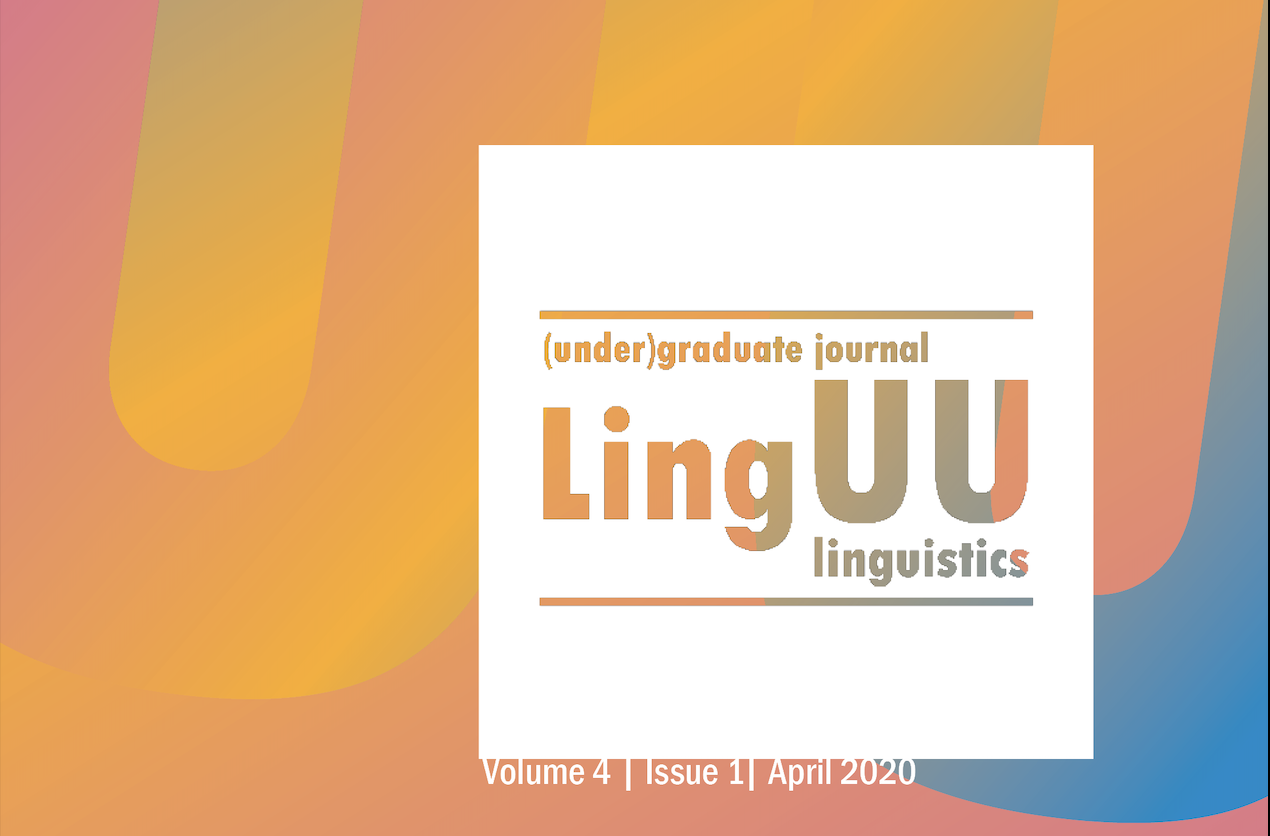
LingUU 4.2 is out now! The sixth issue of LingUU Journal features articles on various linguistic topics, written by students from different BA and MA programmes. Download the entire issue, browse through the contents, or order a paper copy (while supplies last).
Marian Marchal (RMA Linguistics) examines the acquisition of sentences containing both a modal verb as well as negation. She argues that a stage of Unique Scope Assignment might not be necessary to explain Italian-acquiring children’s interpretation of these sentences. An experiment is proposed to investigate whether children are able to access the adult-like interpretation if additional processing cost is controlled for.
Bjorn Lichtenberg(RMA Linguistics) discusses how language has evolved by reviewing the cultural approach to this question. After outlining how language is viewed in this approach, research in favor of this theory is examined, In addition, the author reviews the validity of claims favoring a biological approach. The paper reveals that the cultural approach is able to explain many aspects of language evolution.
Lex Tavenier(RMA Linguistics) analyzes a construction which is typical for creole languages, namely, serial verb constructions. Serial verb constructions consist of at least two consecutive verbs while only one grammatical subject is present. The verbs enter into complex syntactic and semantic relationships. The author considers a couple of possible syntactic analyses for the serial verb construction and comes to conclude that the findings are compatible with both analyzing the construction as serialized IPs and with analyzing it as serialized VPs, though statistical corpus analysis seems to suggest the VP-serializing to be more probable.
Vanessa Kühn (RMA Linguistics) further investigates the way in which clinical symptoms of schizophrenia are reflected in language. Especially central in her paper is the link between clinical symptoms and the emotion word usage of patients. She presents two examples of the untypical emotion word use in patients and combines these insights with the emotion processing model by Vingerhoets et al. (2000). Using this model, Kühn illustrates the influence of clinical symptoms of schizophrenia on general emotion processing further.
Beactrice Bancheri (RMA Linguistics) discusses the importance of emotion in the acquisition of a first language. Based on a model on human cooperation, Bancheri shows that emotion and language are closely intertwined. In addition, she discusses several aspects of language acquisition, such as infant-directed speech and word learning, in which emotion plays a prominent role.
Elina van Greuningen (RMA Linguistics) interned at the Humboldt Universität in Berlin. Here she researched the effect of the similarity between the German and Dutch language on the acquisition of gender in Dutch. In addition to her research experience, her stay in Germany was a special cultural experience with the 30th anniversary of the fall of the Berlin Wall.
Anouschka van Dijk (Msc Neuroscience and Cognition) discusses the film The Silent Child by directors Chris Overton en Rachel Shenton. This film follows a family with a four year old child named Libby who was born deaf. When the family hires a social worker who teaches Libby sign language, the new ability to communicate opens up a new world for her. Anouschka recommends the film to those who are interested in the obstacles a deaf person faces and those who are looking for a new perspective on the importance of language and communication.
And finally, our column The Daily Linguist is all about language related movies, documentaries, blogs, applications and events.


